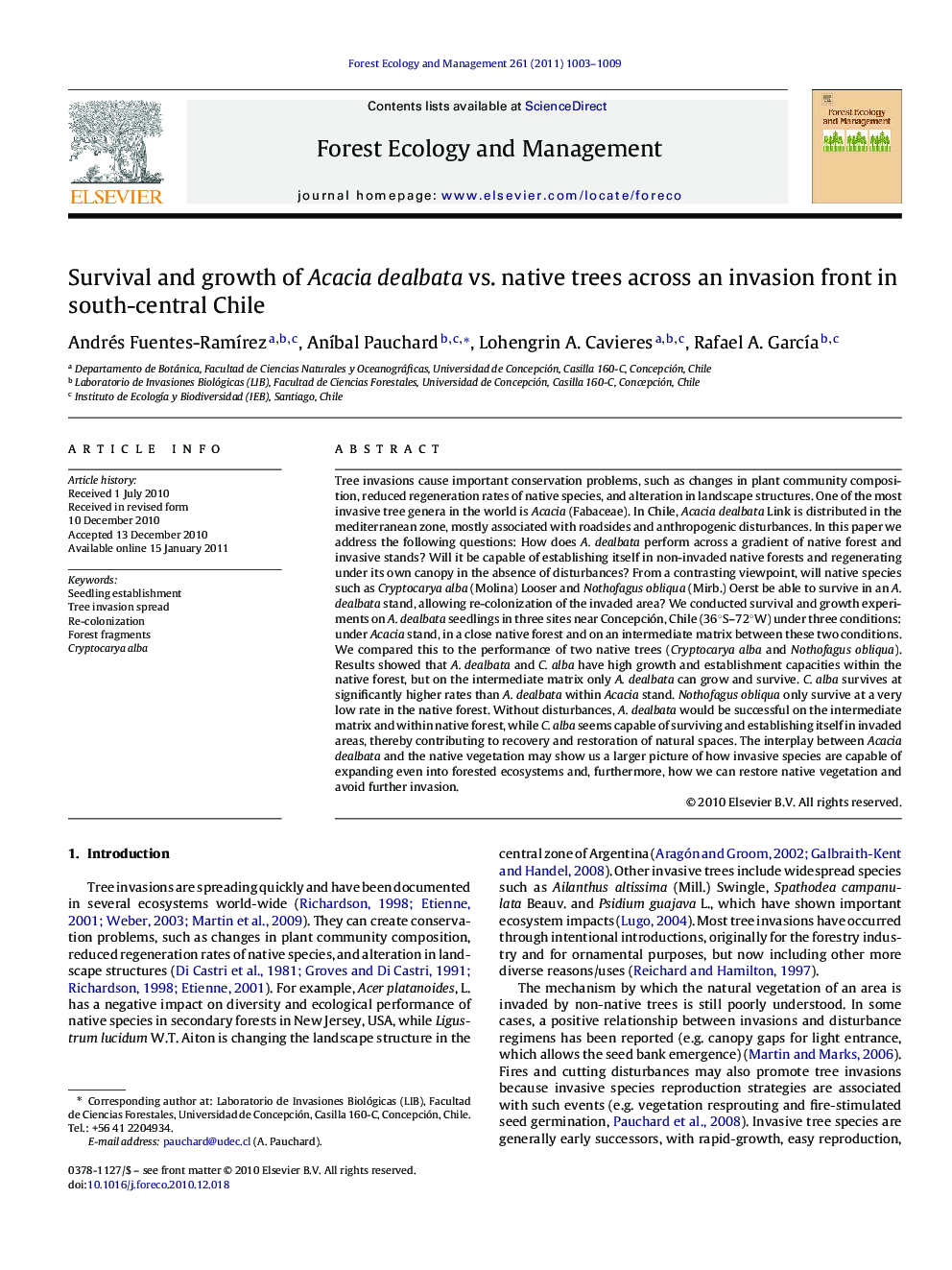| Article ID | Journal | Published Year | Pages | File Type |
|---|---|---|---|---|
| 88241 | Forest Ecology and Management | 2011 | 7 Pages |
Tree invasions cause important conservation problems, such as changes in plant community composition, reduced regeneration rates of native species, and alteration in landscape structures. One of the most invasive tree genera in the world is Acacia (Fabaceae). In Chile, Acacia dealbata Link is distributed in the mediterranean zone, mostly associated with roadsides and anthropogenic disturbances. In this paper we address the following questions: How does A. dealbata perform across a gradient of native forest and invasive stands? Will it be capable of establishing itself in non-invaded native forests and regenerating under its own canopy in the absence of disturbances? From a contrasting viewpoint, will native species such as Cryptocarya alba (Molina) Looser and Nothofagus obliqua (Mirb.) Oerst be able to survive in an A. dealbata stand, allowing re-colonization of the invaded area? We conducted survival and growth experiments on A. dealbata seedlings in three sites near Concepción, Chile (36°S–72°W) under three conditions: under Acacia stand, in a close native forest and on an intermediate matrix between these two conditions. We compared this to the performance of two native trees (Cryptocarya alba and Nothofagus obliqua). Results showed that A. dealbata and C. alba have high growth and establishment capacities within the native forest, but on the intermediate matrix only A. dealbata can grow and survive. C. alba survives at significantly higher rates than A. dealbata within Acacia stand. Nothofagus obliqua only survive at a very low rate in the native forest. Without disturbances, A. dealbata would be successful on the intermediate matrix and within native forest, while C. alba seems capable of surviving and establishing itself in invaded areas, thereby contributing to recovery and restoration of natural spaces. The interplay between Acacia dealbata and the native vegetation may show us a larger picture of how invasive species are capable of expanding even into forested ecosystems and, furthermore, how we can restore native vegetation and avoid further invasion.
Research highlights▶ Trees invasions can generate important conservation problems. ▶ Acacia dealbata is an invasive tree in open areas and in native forests of Chile. ▶ A native tree (Cryptocaria alba) survives with limited growth under Acacia stands. ▶ Acacia dealbata could be replaced with native tree species through restoration. ▶ This research highlights tree invasion mechanisms and options for restoration.
